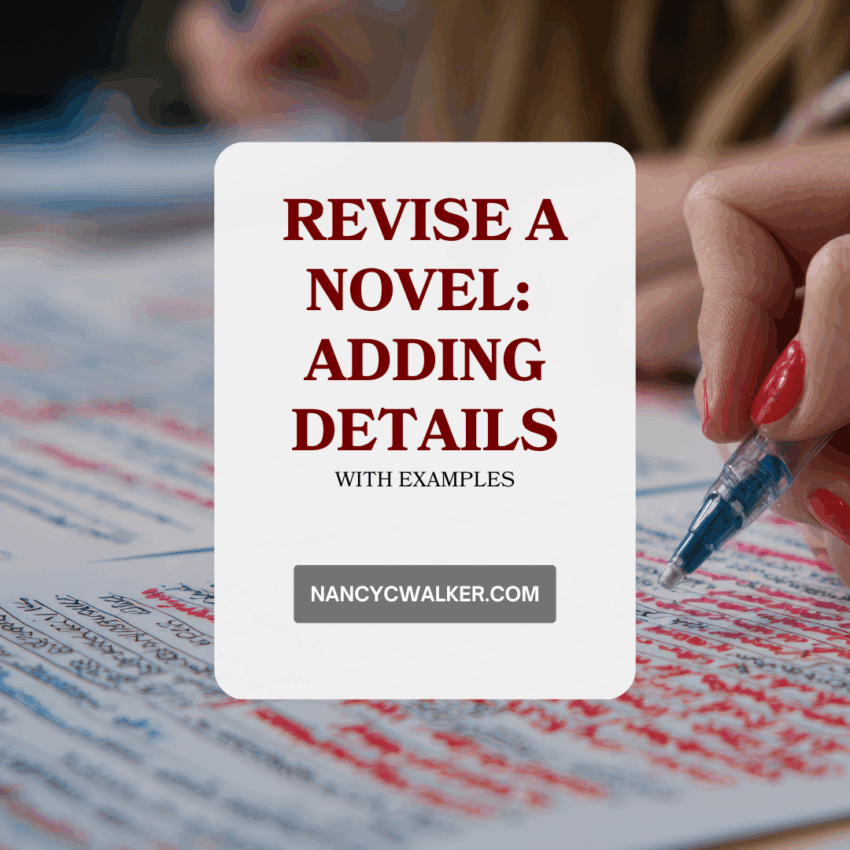This article is part of a series about how to revise a novel.
The magic that makes a novel’s prose truly unforgettable often lies not in epic scope or convoluted twists. Instead, it is found in the precise, sensory details an author selects. These are the small, telling moments that ground the narrative and breathe life into characters and settings. Specificity is the essential tool that elevates a generic scene into a vivid, resonant world for the reader.
Why Details Matter: The Foundation of Immersion
Details are the building blocks of sensory experience and emotional connection. Think of a generic description versus a specific one.
- Generic: The man was angry. (Tells us a state.)
- Specific: The man’s knuckles were white as he gripped the edge of the chipped Formica counter, his jaw working as if he were chewing on gravel. (Shows us the state, inviting the reader to feel the tension.)
Creating Sensory Resonance
Effective detail engages the five senses, pulling the reader into the scene. When you appeal to sight, sound, smell, taste, and touch, you stop telling the reader about a world and start letting them experience it.
Sensory Examples
- Sight: Generic: She wore a fancy dress.
- Detailed: The dress was a riot of emerald green taffeta, catching the chandelier light with every rustle, adorned with tiny, hand-stitched silver beads that resembled dew drops.
- Sound: Generic: The house was quiet.
- Detailed: The only sound was the insistent, rhythmic drip of the leaky faucet in the hall bathroom, marking time like a slow, metallic heartbeat.
- Smell: Generic: The air smelled sweet.
- Detailed: A heavy, cloying scent of almond and burnt sugar—the residue of a failed baking experiment—hung thick and still in the air.
- Touch: Generic: The fabric was soft.
- Detailed: The old quilt felt like worn river stones under her fingertips, each square a different, familiar texture of faded cotton and coarse wool.
The Role of Detail in Character and Setting
Specificity doesn’t just paint a picture; it deepens understanding of your characters and their environment.
Revealing Character through Micro-Detail
A character’s habits, possessions, and physical ticks tell a richer story than pages of exposition. Instead of stating a character is meticulous, show it:
- Does their workspace have “pencils sorted by lead hardness, labeled in tiny, immaculate script”?
- When they are nervous, do they “adjust the cufflink on their left sleeve exactly three times before speaking”?
These small observations transform a stock character into a unique individual.
Grounding the Reader in Setting
Setting details anchor your narrative in reality. Don’t just say “a cafe.” Describe the cafe:
- Is the counter sticky with old spilled espresso?
- Do the chairs scrape loudly on the mosaic floor when customers stand up?
- Is the air thick with the smell of stale coffee and damp wool coats?
These elements make the setting a character in itself, influencing the mood and action of the scene.
Tips for Injecting Detail
Integrating powerful detail is a practice, not a talent. Use these strategies to elevate your drafts:
1. The “Show, Don’t Tell” Mantra
This is a common piece of writing advice that hinges entirely on details. Some consider it a rule of writing. I am not one of those people. However, it is important to add detail to give your story dimension when needed. If you find yourself telling the reader an emotion or state (e.g., He was tired), stop and ask: “What does tired look like, sound like, or feel like for this specific person?”
2. Focus on Nouns and Verbs
The fastest way to dull a sentence is with vague nouns and weak verbs.
- Weak: She walked quickly across the room.
- Stronger: She marched across the parquet floor, her heels stuttering a nervous rhythm.
Replace general nouns (e.g., flower, vehicle, sound) with specific ones (e.g., wisteria, vintage Vespa, the whir of a broken ceiling fan). Use expressive verbs (e.g., marched, strode, scampered) instead of adding qualifiers (e.g., quickly walked).
3. Edit for Specificity
During revision, treat any abstract or general statement as a placeholder. Highlight every instance of “very,” “some,” “a lot,” and other general qualifiers. For each, ask yourself: Can I replace this with a concrete image or number?
Vague vs. Specific Examples
Vague Placeholder: She was very cold.
Specific Replacement: A chill that felt like shards of glass settled into her bones.
Vague Placeholder: He had some money.
Specific Replacement: The crumpled twenty-dollar bill was the last lifeline in his wallet.
Vague Placeholder: The event was successful.
Specific Replacement: The fundraising dinner exceeded its goal by 150%, netting $42,000 for the shelter.
By prioritizing specific, sensory details, you move beyond merely conveying information; you create an experience. It is the careful placement of these small, brilliant pieces that proves the true power of your pen.

